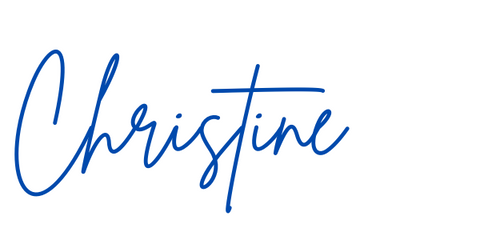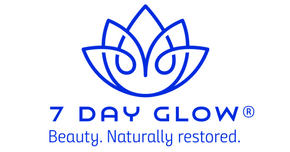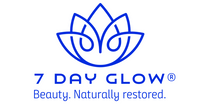Exfoliation 101 - Beginner's Guide

We know washing our face is the key foundational step to glowing skin.
But did you know exfoliating is almost equally important (and I know some experts would say even more important) as washing?
Regular exfoliation is the key to getting that youthful glow we all crave. Clear skin allows light to better reflect off our skin and results in improved skin-cell-turnover. Properly exfoliated skin also feels velvety smooth, not rough to the touch.
I think of exfoliation as an essential step in my cleansing regimen.
Why? Because cleansing alone is not enough to adequately sweep away dead skin cells and build-up, especially as we age. Even if you are using a Double Cleansing regimen daily, you still need to exfoliate to dissolve debris.
Excess sweat, debris, and sebum (natural oil produced by your skin) can create a build-up on skin that clogs pores and dims your natural Glow. Think of it like a built up layer that is suffocating your skin - causing problems like acne, break-outs, and a dull complexion.
Luckily, there are several types of treatments to address exfoliation easily and quickly. The real key is being aware of this step and following through!
Why exfoliate?
Touch your face - I know, I'm always telling you not to touch your face - but for this exercise, touch your face. Run your fingertips over your face.
If you've been exfoliating and keeping up with a regular skincare regimen your face should feel baby-smooth, as if you've just come from a spa facial.
If not, you may feel some irregularities or rough patches to your skin. It may even feel a little gritty or a bit like sandpaper.
Feeling a bit rough? Less than baby smooth? Don't worry, you are 100% normal and exfoliating will fix that.
As we age our skin's ability to slough off dead skin cells slows.
Our skin exists in a state of continual renewal, it is sloughing off dead skin cells constantly. Skin renews itself from the bottom up, creating plump new cells deep within, where they begin their journey to the skin’s surface. During this journey skin cells flatten and lose their plumpness. Eventually they reach the surface where they slough off.
When we are young, new cells regenerate approximately every 30 days. As we age, this process slows, taking almost 60 days by the time we reach our fifties. Because our natural process of sloughing off dead cells slows as we age, we must help the process along or dead cells will build up on our skin contributing to a dull complexion, blocked pores and break-outs.
Exfoliation also works to remove stubborn product build-up and debris. It supports the body’s process of making healthy new cells. Removing layers of debris and build-up also clears the way for our serums, oils, and moisturizers to better do their job.
How To
Exfoliating feels so good and leaves skin so silky smooth it is tempting to overdo it. Be careful to start with light exfoliation and only increase as needed. Once your skin reaches the point of feeling silky smooth back off a little on your exfoliation to ensure you do not damage the skin mantle. You can always add more, but once you go too far your damaged skin will feel dry and need time to recover.
Exfoliate once or twice per week, especially during warm months when pollution and outdoor debris are more likely to attach themselves to skin in humid climates.
Always apply exfoliant after cleansing to help the exfoliant do its job. Then cleanse again after exfoliating to ensure you have removed any remaining exfoliation solution.
Try the 7 Day Glow Triple Cleansing Regimen - 1. Pre Cleanse with CLARIFY Hydrating Cleanser to remove make-up and surface debris. 2. Exfoliate with BOOST Resurfacing Treatment. 3. Cleanse with RECLAIM Radiance Nourishing Cleanser.
Always apply a high SPF sunscreen after exfoliating as exfoliated skin may be extra sensitive to sun exposure.
Types of Exfoliators.
There are several different approaches to exfoliation. Match your exfoliant to your skin profile (normal, oily, dry, acne prone, aging, etc.).
You may also choose to use a combination of types - for example, wash your face using a washcloth daily, use a dry mask (mechanical) once per week, and a BHA liquid mask once per week - or any combination you desire.
The important thing is to be consistent and exfoliate regularly.
Mechanical: Mechanical exfoliators are the most common type of exfoliant. They employ elements that “scrub” debris from skin such as sugar and ground seeds. Be careful to avoid overly coarse scrubs, such as apricot kernels and walnut shells, as they can tear at skin.
Most "DIY Mask Recipes" and dry scrubs and masks are mechanical types of exfoliators.
Other types of mechanical exfoliators include brushes, washcloths, and facial pads.
If you'd like some DIY mask recipes sign up for the "Wash Your Face Workbook" using the link below.
Enzymes: For deeper exfoliation opt for an enzyme exfoliator. Fruit enzymes work to penetrate skin deeply, dissolving the protein bond that holds dead skin cells in place. Enzyme masks are super gentle, making them perfect for sensitive skin types.
Hydroxy Acid (AHAs and BHAs):
Acid exfoliators are preferable over mechanical exfoliation as they work without the risk of tearing skin that mechanical exfoliants have.
At 7 Day Glow we have BOOST Resurfacing Treatment as our liquid Hydroxy mask.
Stronger than enzymes, one of the most effective ways to exfoliate is using ingredients rich in natural hydroxy acids.
There are two main types of hydroxy acids:
- Alpha (think acids derived from milk or sugar like glycolic, lactic, and citric) and
- Beta (salicylic acid derived from Willow bark).
Hydroxy acids are chemical (natural or synthetic) exfoliants that clear skin’s surface by sweeping away dead skin cells. Look for products that use 100% natural sources of Hydroxy Acid, avoid using synthetically manufactured ingredients.
Hydroxy acid should be an exfoliating staple in your skin care routine as they also help to stimulate the production of new collagen and elastin.
Alpha-Hydroxy Acids (AHAs) are excellent for battling signs of aging. Their small molecular structure allow them to sink in deeply to dissolve intracellular glue found in the top layer of the skin. AHAs also stimulate collagen to improve skin firmness and elasticity. They increase glycosaminoglycans for increased elasticity and maintain keratinization to support hydration. AHAs help increase skin thickness, making it more supple.
Beta-Hydroxy Acid (Salicylic Acid) is an exfoliant that increases our skin’s ability to dispose of dead skin cells. Beta-Hydroxy Acid penetrates oily pores and clears the pore itself because it is soluble, making it very useful in managing blocked or clogged pores. Salicylic acid found in BHAs is thought to be one of the best exfoliants for use on congested skin.
Summary
Regardless of which type of exfoliator you choose, the true formula for glowing, beautiful skin is consistency plus quality skincare products that are the right formulation for your skin needs.
Want more details? Snag your FREE Wash Your Face Workbook below.
Remember - every single week for your best glowing, fresh face.

Christine Untiedt, CEO, 7 Day Glow LLC
-------------------------------------------
Notice: These statements and blog content have not been evaluated by the Food and Drug Administration. The information in our articles are not intended to replace a one-on-one relationship with a qualified health care professional and are not intended as medical advice. The content of these blogs and associated products is not intended to diagnose, treat, cure or prevent any disease. If you are pregnant, nursing, taking medication, or have a medical condition, consult your physician before using products or following blog advice.








Leave a comment